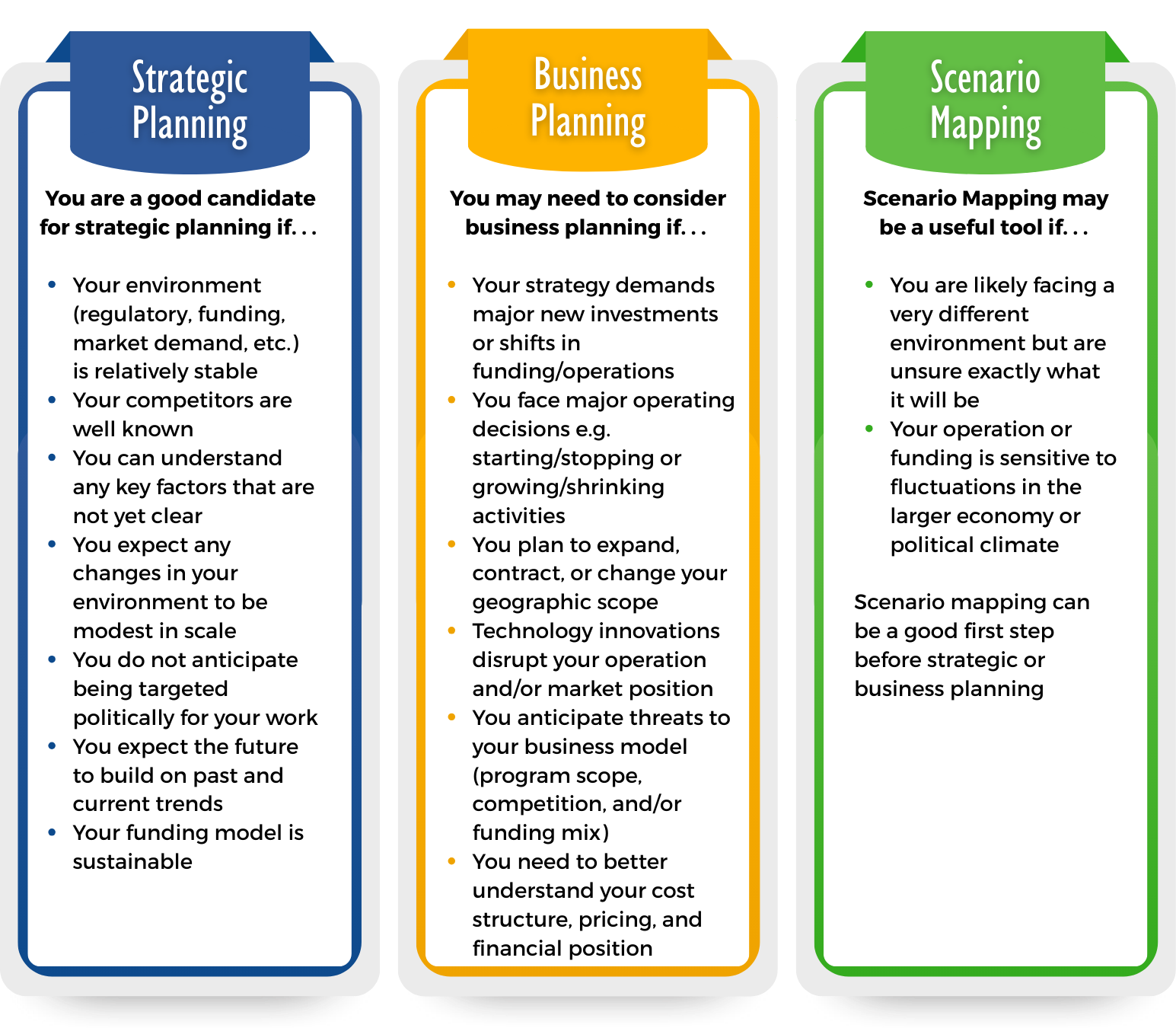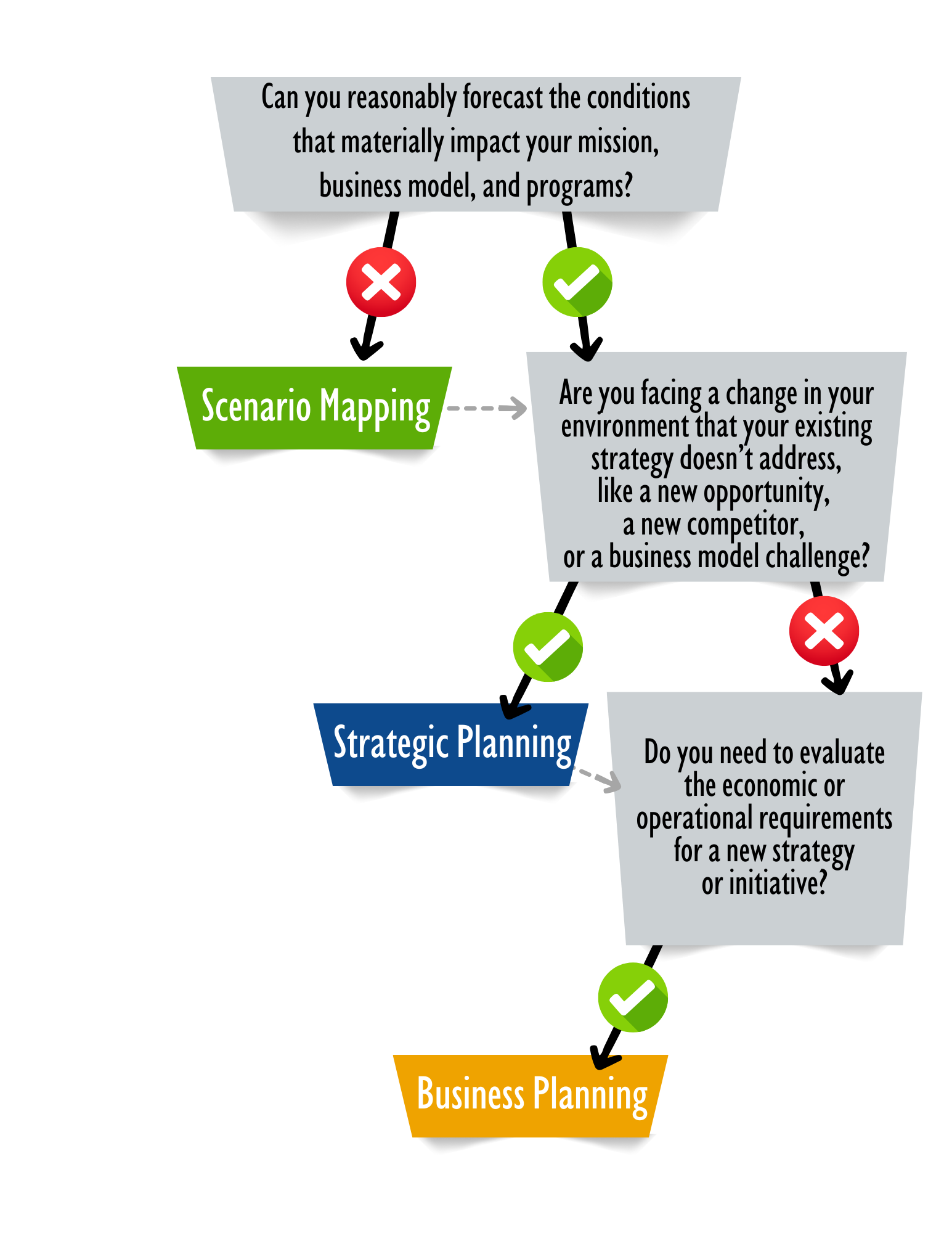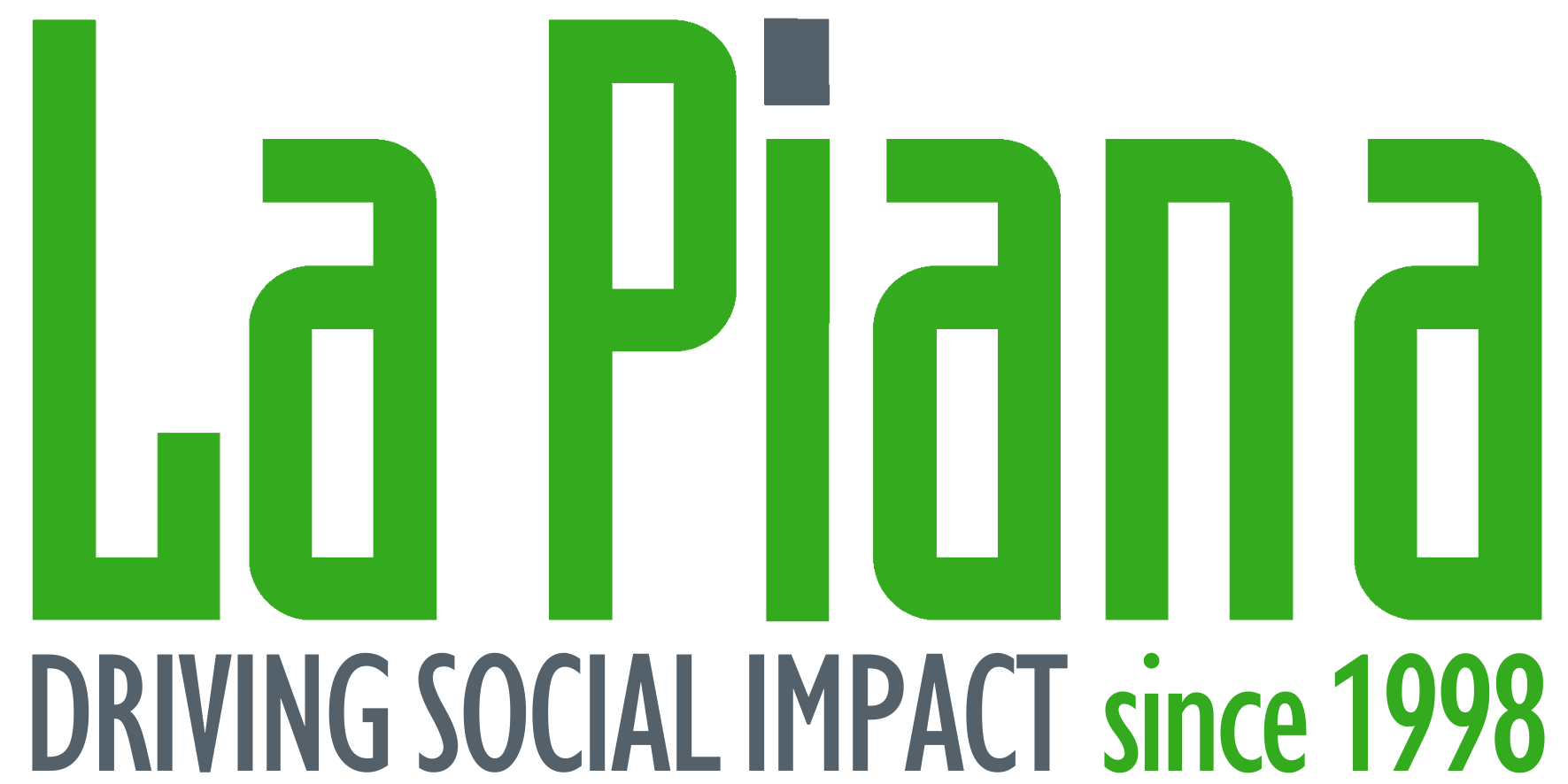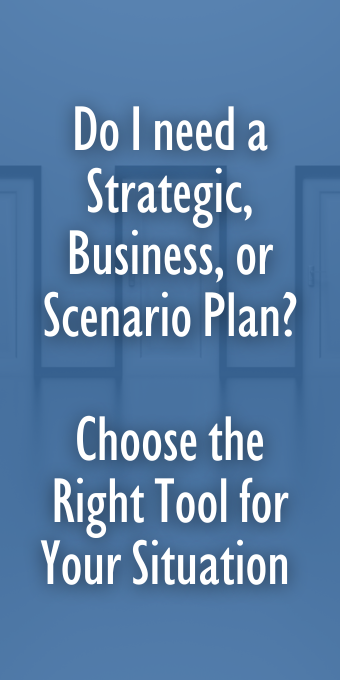Do I need a Strategic, Business, or Scenario Plan? Choose the Right Tool for Your Situation
Every organization needs a sound strategy. Strategy drives a set of coordinated actions to enhance your work while ensuring organizational sustainability. But how do you develop strategy when the world is simultaneously Volatile, Uncertain, Complex, and Ambiguous? That’s the VUCA world — a set of factors identified by the U.S. Army War College in 1989, which provide an apt description of the situation many social sector organizations find themselves in today.
- Volatility means frequent, rapid, and significant changes where even small triggers can result in larger-than-expected shifts.
- Uncertainty means events are unpredictable, cause and effect are not well understood, and previous experience doesn’t help make sense of it.
- Complexity means dealing with many interconnected issues and the relationships between these issues are difficult to understand.
- Ambiguity means a lack of clarity, making it difficult to understand what the situation actually is and to discern future trends.
Does this sound familiar? The VUCA world is hostile — but beyond that, it is one in which it is difficult or impossible to identify the key drivers of change, how they interact, and what it all means for your organization. The Trump Administration’s approach to governance has been called intentional chaos. It has created a VUCA environment for government, business, and the social sector.
Nonprofits have powerful tools at their disposal for forming strategy. But which one is right for you and how do you use these tools in a VUCA environment? First, a few definitions.
Strategic Planning is the process of deciding which actions will best advance your mission, then developing plans to take those actions. Traditional strategic planning uses a multi-year timeframe, most often three years, assuming a largely knowable world where the organization can identify, understand, and even quantify key variables. We updated this model with our Real-Time Strategic Planning methodology — which was created to account for uncertainty, making it even more powerful in these VUCA times — but sometimes even that flexible model needs tweaking for the level of chaos an organization anticipates.
Business Planning determines the economic and operational requirements for a given strategy to succeed. Strategy must come first. Then, a business plan determines how best to implement it. What costs will you incur, and what staffing and tech will you need? Like strategic planning, business planning assumes a largely knowable world.
Scenario Planning is a tool to inform strategy development. It is particularly useful in a VUCA world, where the inputs required for strategic or business planning are unclear, even unknowable. For this reason, we often refer to the process as Scenario Mapping, envisioning different future states based on widely varying circumstances an organization may face. Scenario mapping is a good first step before strategic or business planning in a VUCA environment — helping you to describe the potential direction of changes you see coming, to identify common steps you can take to prepare, and to prepare your team to respond as the situation clarifies.
In determining which approach to to use, consider the following factors:

Choose the Right Planning Tools for Your Situation
The decision tree below will help you determine which planning tool is appropriate in your organization’s current situation.



Comment section